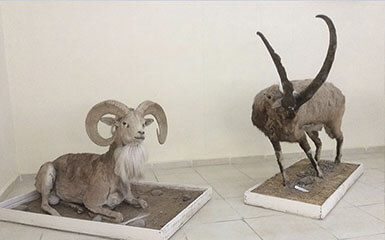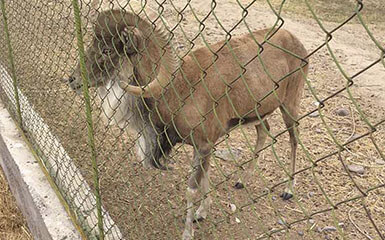Ashgabat
Alem Ferris wheel
State Museum
Fine Arts museum
Wedding Palace
Nisa fortress
Memorial Complex
Ertogrul Gazi Mosque
Neutrality monument
Independence Park
Turkmenbashi Ruhy Mosque
Olympic Village
Ylham Alley
Carpet Museum
Monument of Lenin
Ahal Region
Abivert
Altyn Depe
Annau
Darvaza
Geokdepe
Kowata
Mane baba
Zengi baba
Nedir Shah
Nokhur
Parzdepe
Sarahs baba
Seyit Jemaleddin mosque
Shahrislam
Ulug depe
Mary region
40 cupolas
Akcha Kala
Ancient Merv
Badkhyz
Chilburj
Gebeklytepe
Geok Gumbaz
Gurtly Depe
Kharoba Koshuk
Talkhatan Baba
Yekedeshik
Dashoguz region
Ashyk Aydyn Pir
Devkeshen
Ismamit ata
Kalaly-gyr
Kaplankyr Nature Reserve
Kunya-Urgench
Damla
Balkan region
Dehistan
Yangikala
Awaza
Gozli ata
Kemal ata
Mashat ata
Paraw bibi
Lunar Mountains
Shevlan Baba
Igdy kala
Travellers cannot leave Turkmenistan without visiting one of its bazaars! After all, if a trip is the best way to get to know the culture and life of people in a country, then visiting a bazaar allows feeling inexpressible exotic flavour. This fact is crucial, especially for the country located in the East, where bazaar is not just a special territory for purchase and sale, but a place where ancient traditions and completely unique features are carefully preserved.
A lot of information has been said and written about the oriental bazaars... As a rule, descriptions of the oriental bazaar remind fairy tales. There are bright silks and most beautiful carpets, the finest works of jewellers (in Turkmen ‘zergers’) and richly decorated costumes, fantastic sweets and fruits from all over the world, and the teahouses, where visitors have a leisurely conversation over a bowl of fragrant tea. In modern times, this colourful fairy tale is amplified by the comfort for sellers and buyers, typical for European markets, and the teahouse has been transformed into comfortable cafes and restaurants, where the dishes of national cuisine are prepared in your presence.
In Ashgabat, many bazaars are located inside the residential areas and are willingly visited by the people who live nearby. However, the most visited bazaars are situated in the city centre – Teke and Gulustan bazaars, which are popularly called ‘Tekinka’ and ‘Russian’. Moreover, both markets are the oldest; they are the same age as Ashgabat and have their own history and location in the historical places.
A century ago, ‘Tekinka’ was smaller and consisted of two parts. The bazaar did not have fences or gates, but it was simply divided by an adobe fence. On one side of the market, people sold sheep and camels, and on the other side, vegetables and melons were placed on the stalls. Between the bazaar and the caravanserai, there was an area with private property of small shopkeepers and artisans – tinsmiths, shoemakers, haberdashers, barbers, and kerosene sellers.
The ‘Russian’ bazaar has been called this way since the late 19th century, when the residential quarters were built on the site of the present-day Ashgabat. At that time, the bazaar was opened, and merchants from the neighbouring countries brought their goods here. In that period, the carrier’s trade was mainly in charge of the Molokans – the Russian settlers who rejected Orthodoxy. They founded settlements at the foothills of the Kopetdag Mountains, provided transport services for the rapidly growing city, and the first bazaar very soon became known as ‘Russian’.
An impressive architectural image of the ‘Russian’ bazaar was created in the late 70-es of the 20th century, when a large-scale building of the indoor market was erected according to the project of the Ashgabat architect Vladimir Vysotin on the historical site. Inspired by the building of the modernist Palazzo del Lavoro in Turin, he created an original project with features of national symbols. Ten giant umbrellas connect and form a common roof over the bazaar. Inside the market, a giant concrete sculpture embodies the ferula, which the Turkmen people call ‘the goitered gazelle’s bowl’. This structure is a basement air duct.
The trade area of ‘Tekinka’ represents the open-air stalls, replete with generous gifts of the Turkmen land. Lively sellers and barkers, as in olden times, challenge each other for the attention of buyers and praise the abundance of their stalls. Specialty shops are situated along the boundaries of the market.
These two oldest markets of the Turkmen capital have radically changed in appearance over the decades of their history. However, to date, the traditions of the amazing, unique flavour of the generous oriental bazaar, known from fairy tales, legends, and stories of the ancient travellers who made their way from the Pacific Ocean shores to Europe along the Great Silk Road route, have remained. As before, the bazaar is replete with the colours of generous fields and gardens, with the aromas of fruits and other products of the Turkmen land. At the bazaars, people can find the grapes permeated with the sun's rays, shiny sweet cherries and sour cherries, the strawberries melting in the mouth, juicy apples, tempting peaches and apricots with their delicate freshness, amber honey melons and watermelons with their juicy scarlet pulp.
The traditions of regular customers and benefits for older people have remained. Customers should bargain, and this is a cherished tradition of the oriental bazaar. The main thing is to observe the traditions of communication, which imply mutual benevolence and openness.
These traditions are supported by the largest centralized shopping complex in Central Asia, the Altyn Asyr bazaar, which was opened in the north of the Turkmen capital in 2011. It was built to replace the old Tolkuchka bazaar. The name of the former market indicates that people thronged and jostled; it was always crowded and uncomfortable there. On weekends, almost the whole city, as well as the people from other regions of the country, merchants and buyers, came to the Tolkuchka bazaar.
The modern Altyn Asyr bazaar is located on an area of 100 hectares. 16 large structures, namely, extensive indoor pavilions with hundreds of shops in each, are provided on the bazaar’s territory. Its analogues work in all administrative centres in Velayats.
The Altyn Asyr bazaar resembles a Turkmen carpet pattern from a bird's eye view. According to the architectural design, the indoor pavilions are separated by the roads, numerous lawns, pedestrian zones, parking lots and fountains, which are obligatory for the architecture in the Turkmen cities. There is the dominating structure of the entire complex – a thirty-metre clock tower in the centre of the bazaar. A hotel for the visiting sellers and buyers has a 100-person capacity. There is an extensive network of cafes and bistros at the bazaar.
Despite the impressive size of the market, buyers easily find the products they need. The territory of the bazaar is divided into special trade zones, which are designed for certain types of products, namely, food and household goods, building materials and furniture, textiles and footwear, electronic and household appliances, haberdashery and perfumery.
Original and traditional jewellery are purchased here. Excellent Turkmen hand-made carpets and handicrafts are very popular among foreign buyers. The part of the market where livestock is sold is always of particular interest to tourists.


